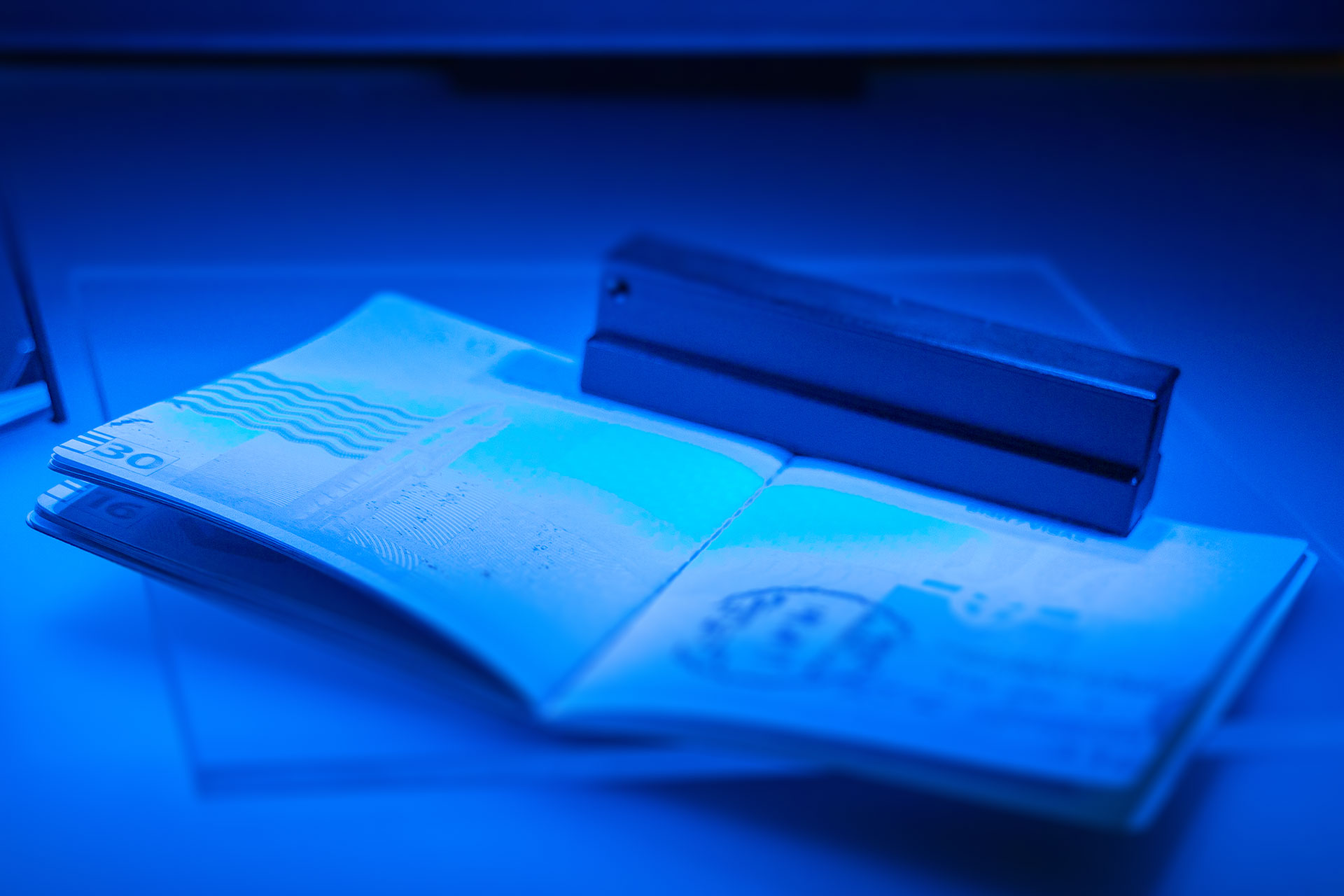Magnifying glass, luminaire, lamp? Which technical tool is better for checking UV features?
An interview with document expert Jens Mayer
To make life more difficult for document counterfeiters, governments around the world are adding color-complex UV features and fluorescent microlettering to their personal documents (e.g. ID cards, driver's licenses, passports) and banknotes. This use shows that these special security features combined with (security) printing techniques work well as protection. However, like all other individual security features, they are not 100 percent forgery-proof and cannot fundamentally protect documents against tampering. To identify counterfeit UV prints, police and authorities use inspection lamps or UV magnifiers. How these tools work, which of them can be problematic and why good training in the field of document examination is essential is explained in an interview by Jens Mayer, retired police commissioner, expert for documents and document expert at DESKO.

Mr. Mayer, when identity documents have to be checked, very different tools are used. Opinions differ, especially when it comes to checking UV features. Light or magnifying glass - which do you think is the better solution when it comes to UV inspection?
Well, it depends on the intended use. For example, if you want to check UV features in bright sunlight with a special UV lamp, then this requires a very high power. These UV lamps pose a not inconsiderable risk to health because the UV light hits the eye unfiltered and can cause damage. In this case, a UV magnifier is more suitable because the viewing area of the magnifier is automatically darkened by the magnifier housing and the dangerous UV rays are filtered. A UV magnifier is therefore much less dangerous. The other advantage of a magnifier is its magnification power, which means that security printing techniques can be detected along with the UV features "in one go".
UV imprints are not counterfeit-proof. What do we know about the counterfeiters' methods?
Equipping documents with UV features has long been an effective method of preventing counterfeiting. However, we also know that UV features do not make documents fundamentally forgery-proof. Today, counterfeiters can excellently reproduce documents and imitate UV features. With access to industrial printing presses and special inks available in hobby stores, the forgeries made by professionals often come quite close to the original.
For cheap document forgeries, UV ink ribbons for dye-sublimation printers, such as those found in some offices, are sufficient.
What is the danger of using UV document inspection lights and lamps compared to magnifying glasses?
The continuous use of open UV lamps or luminaires poses the risk of unfiltered UV radiation hitting the eye or skin and causing permanent damage. Due to its frequency, UV radiation causes skin cancer, can damage genetic material (DNA) and destroy eyesight. In some cases, the consequences of the radiation do not become apparent until years later. This can be compared to sunbathing for many years beyond normal limits.
With the UV magnifier, on the other hand, a plastic housing is built around the UV LED. The housing is placed on the document and then the UV light is switched on. The reflecting light (also components of UV light wavelengths) is filtered at the plastic/glass lens. It's the same in a car, for example: you don't get sunburned behind the glass, because the UV light is filtered through the glass. You feel the heat, but you don't get burned.
UV security features are part of banknotes and identity documents worldwide. What is your recommendation for reliable testing?
There is no blanket recommendation. What is important is that the people who check identities in their work get a "basic understanding" of how a document is structured and what security features can be found on it.
When establishing identity, you have to take the document in your hand and compare the facial image on the document with the person standing in front of you.
If you then follow the principle: "tilt, see, feel", you can use it to check many security features. You should also have knowledge of the structure and special typography of the machine-readable zone (MLZ). If there are "abnormalities" after these initial steps, the UV features and printing techniques should be checked and verified with the UV magnifier.
For federal police, this area is a large part of the training curriculum. In the state police forces and the customs administration, on the other hand, there is still a lot of catching up to do on the subject of document checks. Efficient training and regular advanced training by qualified "multipliers", i.e. document advisors, are therefore essential.

